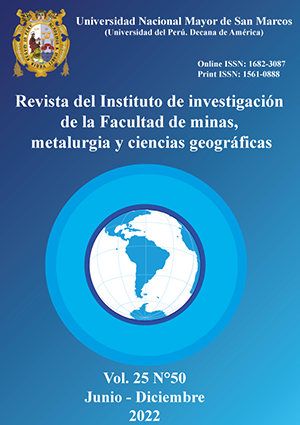Hydrogeological analysis of interflow with FEFLOW for a tailing dam – Arequipa
DOI:
https://doi.org/10.15381/iigeo.v25i50.24319Keywords:
groundwater, seepage flow in porous soil, soil mechanicsAbstract
The development of this research project, aims to apply, validate and adapt the hydrogeological model with the commercial software FEFLOW 7.3, to predict streamlines through filtration rates, for the purpose of installing sub drains at the foot of the tailings dam, by discretizing the domain using the finite element technique. The input parameter to the model consists, with the Soil and Rock Mechanics Study, in the integration of the data from the meteorological stations provided by SENAMHI, with the Hydrological Study, obtaining the design intensities. The scenarios that arise in the model are for a return time of 500 years in a steady and transitory state. Without the installation of sub drains, filtrations were obtained from 1.9412e+5 m3/d, and with the installation of sub drains it drops to 44.34 m3/d, managing to demonstrate the proper functioning of the structure against recharges by installing sub drains at the foot of the tailings dam.
Downloads
Published
Issue
Section
License
Copyright (c) 2022 Efraín Jhiaromir Contreras Gutiérrez, Rubén Esaú Mogrovejo Gutiérrez

This work is licensed under a Creative Commons Attribution 4.0 International License.
AUTHORS RETAIN THEIR RIGHTS:
a. Authors retain their trade mark rights and patent, and also on any process or procedure described in the article.
b. Authors retain their right to share, copy, distribute, perform and publicly communicate their article (eg, to place their article in an institutional repository or publish it in a book), with an acknowledgment of its initial publication in the Rev. Inst. investig. Fac. minas metal cienc. geogr.
c. Authors retain theirs right to make a subsequent publication of their work, to use the article or any part thereof (eg a compilation of his papers, lecture notes, thesis, or a book), always indicating the source of publication (the originator of the work, journal, volume, number and date).






